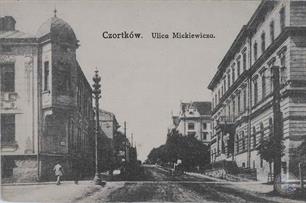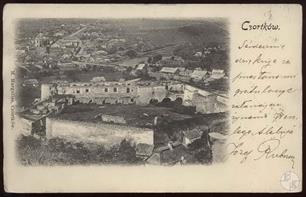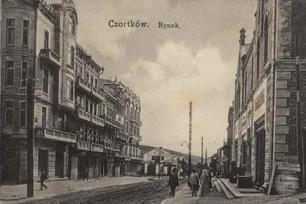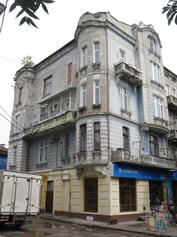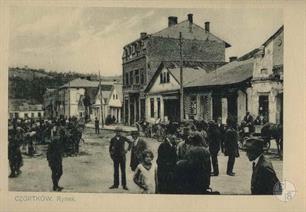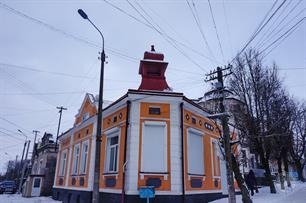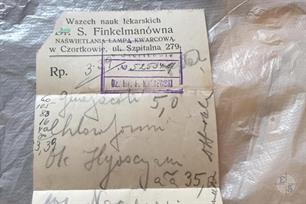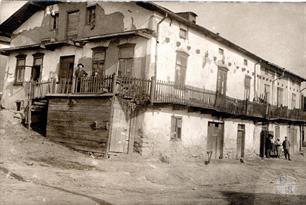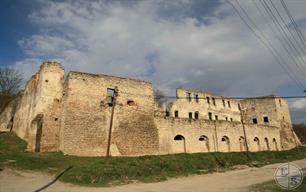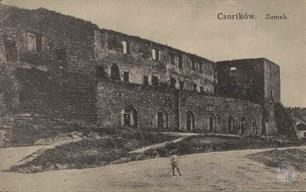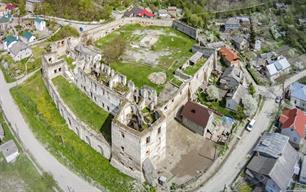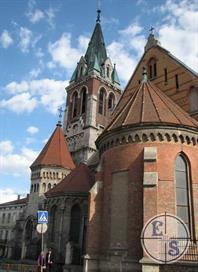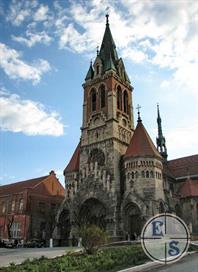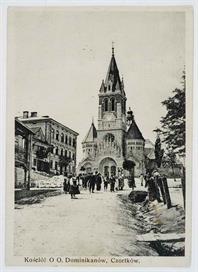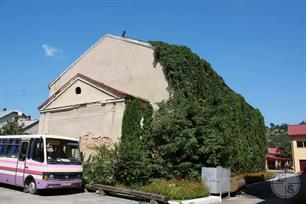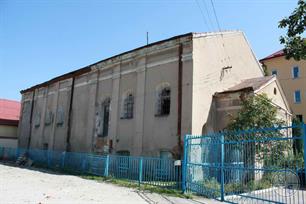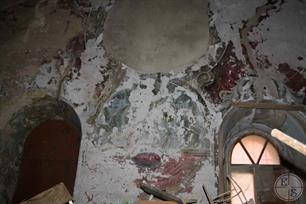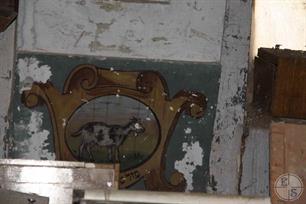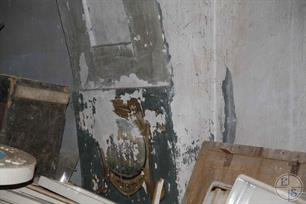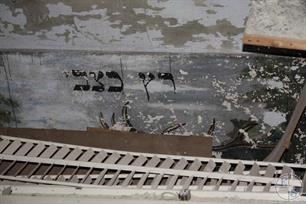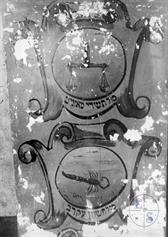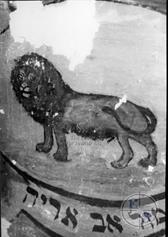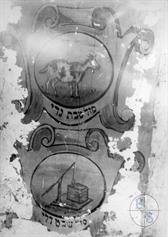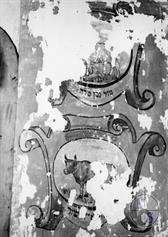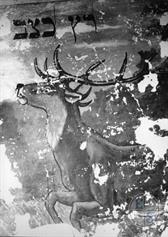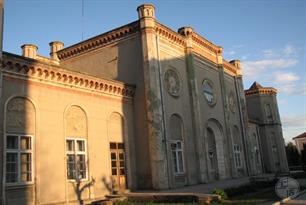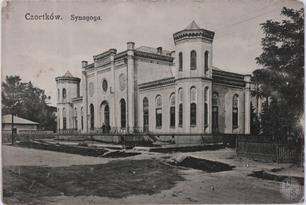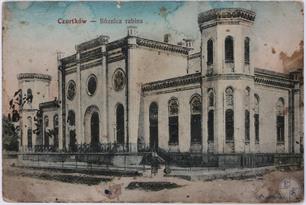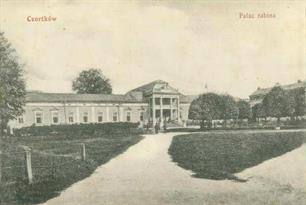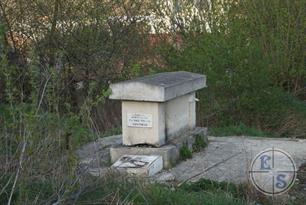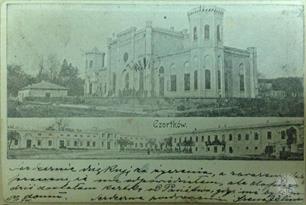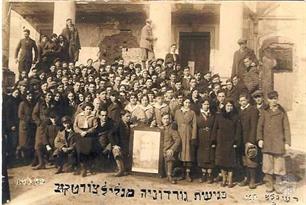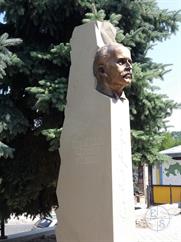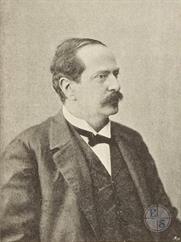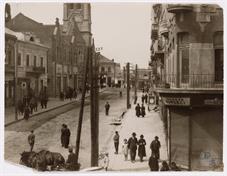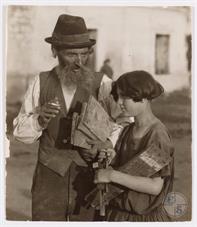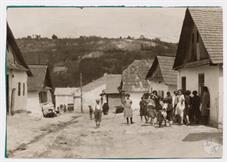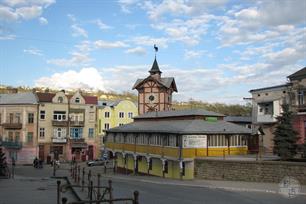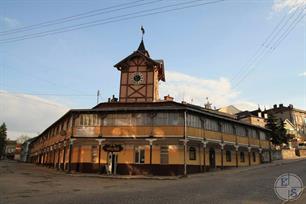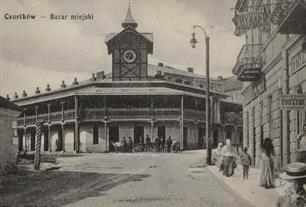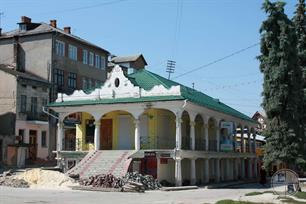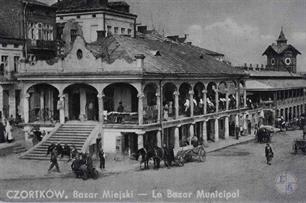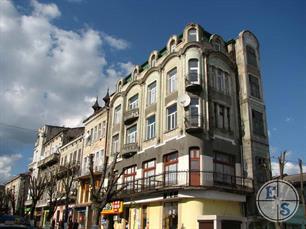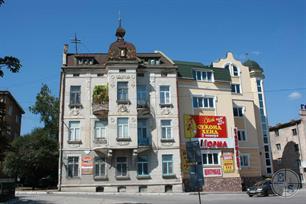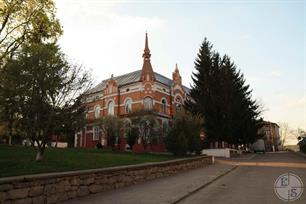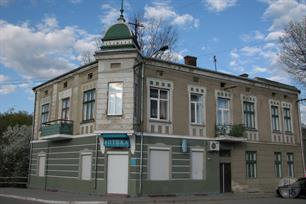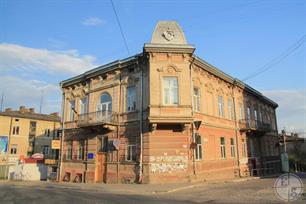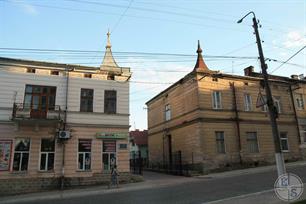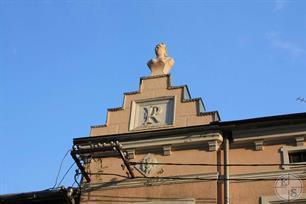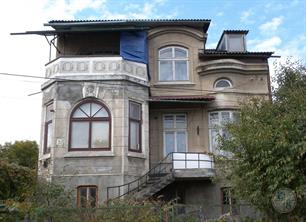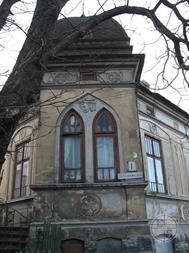Chortkiv
Ternopil region
Sources:
- Pinkas Hakehillot Polin: Encyclopedia of Jewish Communities, Poland, Volume II, published by Yad Vashem, Jerusalem
- Jewish encyclopedia of Brockhaus & Efron
- Russian Jewish encyclopedia
Photo:
- Eugene Shnaider
- European Jewish Cemeteries Initiative
- Alter Kacizne, YIVO. Jewish life in Poland
- D. Dashevskii, The Center for Jewish Art. Chortkiv (Chortkov, Czortkуw)
- FB Group Чорткову – 500 років, published by Andrij Belja
- FB Group Чорткову – 500 років, published by Viktoria Paholiuk
- FB Group Life Before the Holocaust, published by Adrian Andrusier
- Biblioteka Narodowa Polona. Czortkуw
- Wikipedia Architectural monuments of Chortkiv
- Ukrainian Architectural Landmarks. Heritage of Chortkiv
- Pinkas Hakehillot Polin: Encyclopedia of Jewish Communities, Poland, Volume II, published by Yad Vashem, Jerusalem
- Jewish encyclopedia of Brockhaus & Efron
- Russian Jewish encyclopedia
Photo:
- Eugene Shnaider
- European Jewish Cemeteries Initiative
- Alter Kacizne, YIVO. Jewish life in Poland
- D. Dashevskii, The Center for Jewish Art. Chortkiv (Chortkov, Czortkуw)
- FB Group Чорткову – 500 років, published by Andrij Belja
- FB Group Чорткову – 500 років, published by Viktoria Paholiuk
- FB Group Life Before the Holocaust, published by Adrian Andrusier
- Biblioteka Narodowa Polona. Czortkуw
- Wikipedia Architectural monuments of Chortkiv
- Ukrainian Architectural Landmarks. Heritage of Chortkiv
The first historical mention of Chortkiv dates to 1522, when Polish King Sigismund I the Old granted an ownership order for Jerzy Czortkowski over the town and allowed him to name it after himself — Czortkуw.
The small community, numbering at 50 families, were almost all massacred during the Chmielnicki Uprisings of 1648–9. Jewish leadership opposed the resettlement of Jews in Chortkiv until 1705.
During that time, the town was also granted Magdeburg rights.
The small community, numbering at 50 families, were almost all massacred during the Chmielnicki Uprisings of 1648–9. Jewish leadership opposed the resettlement of Jews in Chortkiv until 1705.
During that time, the town was also granted Magdeburg rights.
However, Chortkiv would later decline in the second half of the 17th century during Ottoman Expansion of central Europe.
The town was taken over by Ottoman Empire, whose rule lasted 27 years. It was part of the short-lived Turkish Podolia Eyalet, which lasted from 1672 to 1699.
During this period, it was nahiya centre in Yazlofзa sanjak as Зortkuv (Spelled as Chortkoov in Turkish).
After First Partition of Poland Chortkiv came under Austro-Hungarian rule which lasted from 1772 to 1918, during the time of which it was the center of the Chortkiv Bezirk except brief Russian rule between 1809 and 1815 as part of Tarnopol Governorate.
On June 8, 1919 the Ukrainian Galician Army broke for couple months through the Polish front at Chortkiv and began the Chortkiv offensive. Soon afterwards, the town was seized by the Poles. It was ceded to sovereign Poland in the Peace Treaty of Riga between Poland, Soviet Russia (acting also on behalf of Soviet Belarus) and Soviet Ukraine, and remained part of the Tarnopol Voivodeship of the Second Polish Republic until the Soviet invasion of Poland in September 1939.
The town was taken over by Ottoman Empire, whose rule lasted 27 years. It was part of the short-lived Turkish Podolia Eyalet, which lasted from 1672 to 1699.
During this period, it was nahiya centre in Yazlofзa sanjak as Зortkuv (Spelled as Chortkoov in Turkish).
After First Partition of Poland Chortkiv came under Austro-Hungarian rule which lasted from 1772 to 1918, during the time of which it was the center of the Chortkiv Bezirk except brief Russian rule between 1809 and 1815 as part of Tarnopol Governorate.
On June 8, 1919 the Ukrainian Galician Army broke for couple months through the Polish front at Chortkiv and began the Chortkiv offensive. Soon afterwards, the town was seized by the Poles. It was ceded to sovereign Poland in the Peace Treaty of Riga between Poland, Soviet Russia (acting also on behalf of Soviet Belarus) and Soviet Ukraine, and remained part of the Tarnopol Voivodeship of the Second Polish Republic until the Soviet invasion of Poland in September 1939.
Soon after the founding of the city, Jews began to settle in Chortkiv. By the middle of the 17th century. The community consisted of 50 families.
Almost all Jews perished during the massacre carried out by the Cossacks of B. Khmelnytsky in 1648, and until 1705 no Jews lived in Chortkiv.
In the privileges given to the Jews of Chortkiv by the owner of the city, Count Pototsky in 1722, they were allowed to engage in trade and crafts, settle only in the area near the market, on the streets adjacent to it, they had to pay taxes to the Pototsky and Christian craft workshops.
There was a kahal who had the right to deal with all litigation between Jews; there was a Jewish cemetery and a synagogue functioned.
According to the 1765 census, 764 Jews lived in Chortkiv, in 1900 - 3146 Jews, in 1921 - 3314 Jews.
Almost all Jews perished during the massacre carried out by the Cossacks of B. Khmelnytsky in 1648, and until 1705 no Jews lived in Chortkiv.
In the privileges given to the Jews of Chortkiv by the owner of the city, Count Pototsky in 1722, they were allowed to engage in trade and crafts, settle only in the area near the market, on the streets adjacent to it, they had to pay taxes to the Pototsky and Christian craft workshops.
There was a kahal who had the right to deal with all litigation between Jews; there was a Jewish cemetery and a synagogue functioned.
According to the 1765 census, 764 Jews lived in Chortkiv, in 1900 - 3146 Jews, in 1921 - 3314 Jews.
In 1870, after Rabbi Dovid Moshe Friedman, the son of the Ruzhin's tzaddik, moved to the city, Chortkiv became the residence of branch of the Ruzhin-Sadagor Hasidic dynasty.
Friedman founded a residence here, in the central part of which a synagogue was built. Tens of thousands of adherents of the tzaddik came to Chortkiv for the holidays.
Friedman founded a residence here, in the central part of which a synagogue was built. Tens of thousands of adherents of the tzaddik came to Chortkiv for the holidays.
Photos of The Center of Jewish art. When they were made in 1991, the former synagogue was not yet so cluttered.
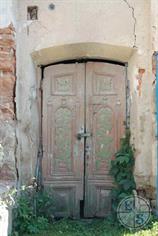 |
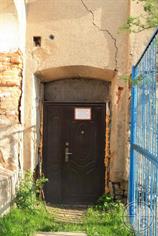 |
| In 2013 there were still luxurious original wooden doors | In 2015 they disappeared, but say that they went for restoration |
Chortkiv was one of the centers of Haskala in Galicia. Maskilim waged a stubborn struggle against the Hasidim, because of which Rabbi D. M. Friedman could not establish himself in the city for 10 years (1860–70).
Jewish students made up the majority of students at the local gymnasium.
In the elections to the Parliament of Austria-Hungary in 1917, the Zionist Mager was elected from Chortkov.
The writer K. E. Franzoz grew up in the city, who in his works brought out the images of local Jews.
In 2017 in Chortkiv, not far from the old town hall , a monument to Franzoz was opened.
Jewish students made up the majority of students at the local gymnasium.
In the elections to the Parliament of Austria-Hungary in 1917, the Zionist Mager was elected from Chortkov.
The writer K. E. Franzoz grew up in the city, who in his works brought out the images of local Jews.
In 2017 in Chortkiv, not far from the old town hall , a monument to Franzoz was opened.
The Jews of Chortkiv became victims of systematic bullying and pogroms during the First World War by those who occupied the city in 1914–15. Russian troops, primarily Cossack units.
On the eve of World War II, the Jewish population of Chortkiv was about six thousand people. When the city was occupied by the Red Army (September 1939), the Jewish population began to increase due to refugees from the German-occupied regions of Poland.
In 1939–41 The Soviet authorities closed down most of the Jewish institutions and organizations, and classes began to be taught in Jewish schools in Yiddish. Many Jews lost their property during the nationalization of commercial and industrial enterprises; many Jewish public and religious figures were arrested.
During this period, the synagogues, which operated under semi-legal conditions, provided all possible charitable assistance to Jewish refugees.
On the eve of World War II, the Jewish population of Chortkiv was about six thousand people. When the city was occupied by the Red Army (September 1939), the Jewish population began to increase due to refugees from the German-occupied regions of Poland.
In 1939–41 The Soviet authorities closed down most of the Jewish institutions and organizations, and classes began to be taught in Jewish schools in Yiddish. Many Jews lost their property during the nationalization of commercial and industrial enterprises; many Jewish public and religious figures were arrested.
During this period, the synagogues, which operated under semi-legal conditions, provided all possible charitable assistance to Jewish refugees.
 |
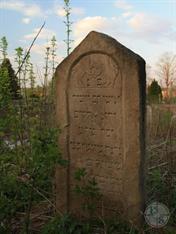 |
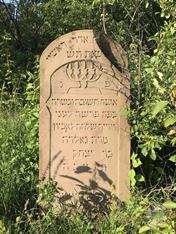 |
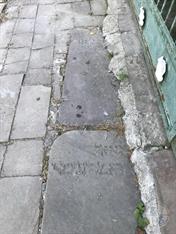 |
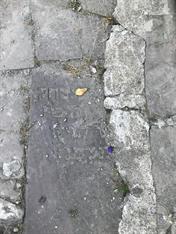 |
| New Jewish cemetery in Chortkiv | Tombstones from Old cemetery used in the pavement | This is coutyard on Roslyaka street |
German troops occupied Chortkiv on July 6, 1941. Only a few hundred young Jews were able to leave the city along with the retreating units of the Red Army.
On July 10, 1941, Ukrainians and Germans massacred about 300 Jews in the courtyard of the local prison.
On July 28, 1941, the Germans shot 150 Jews in the forest near the city.
Jews began to be sent to forced labor, they were limited in their freedom of movement, and subjected to exactions.
At the end of July 1941, the Judenrat was created, on October 12, 1941, a number of its members, together with the head of the Judenrat Sh. Kruh, were destroyed for refusing to obey German orders.
On October 15, 1941, the Germans shot 200 representatives of the Jewish intelligentsia in the forest near the city.
From mid-November 1941, the Germans began to send Jews to forced labor camps and to the Janowska concentration camp.
In April 1942, a ghetto was created in Chortkiv, in which, under conditions of incredible overcrowding, the entire Jewish population of the city was concentrated. Epidemics broke out in the ghetto, resulting in numerous deaths.
On August 27, 1942, during an action in the ghetto, the Germans and Ukrainians shot 600 Jews and sent 2,000 Jews to the Belzec extermination camp.
In September 1942, the territory of the ghetto was reduced, the situation in it worsened even more. During the action on October 5, 1942, 500 Jews were sent to Belzec.
On December 15, 1942, a work camp was established in Chortkiv, in which 500 Jews were imprisoned to work for the needs of the German army.
In late 1942 - early 1943, the Germans carried out a number of actions in the workers' camp, and on June 23, 1943 in the forest near Chortkiv, most of the inhabitants of the camp were destroyed; a few were sent to other work camps.
In September 1943, the ghetto was finally liquidated along with its inhabitants.
On July 10, 1941, Ukrainians and Germans massacred about 300 Jews in the courtyard of the local prison.
On July 28, 1941, the Germans shot 150 Jews in the forest near the city.
Jews began to be sent to forced labor, they were limited in their freedom of movement, and subjected to exactions.
At the end of July 1941, the Judenrat was created, on October 12, 1941, a number of its members, together with the head of the Judenrat Sh. Kruh, were destroyed for refusing to obey German orders.
On October 15, 1941, the Germans shot 200 representatives of the Jewish intelligentsia in the forest near the city.
From mid-November 1941, the Germans began to send Jews to forced labor camps and to the Janowska concentration camp.
In April 1942, a ghetto was created in Chortkiv, in which, under conditions of incredible overcrowding, the entire Jewish population of the city was concentrated. Epidemics broke out in the ghetto, resulting in numerous deaths.
On August 27, 1942, during an action in the ghetto, the Germans and Ukrainians shot 600 Jews and sent 2,000 Jews to the Belzec extermination camp.
In September 1942, the territory of the ghetto was reduced, the situation in it worsened even more. During the action on October 5, 1942, 500 Jews were sent to Belzec.
On December 15, 1942, a work camp was established in Chortkiv, in which 500 Jews were imprisoned to work for the needs of the German army.
In late 1942 - early 1943, the Germans carried out a number of actions in the workers' camp, and on June 23, 1943 in the forest near Chortkiv, most of the inhabitants of the camp were destroyed; a few were sent to other work camps.
In September 1943, the ghetto was finally liquidated along with its inhabitants.
Resistance groups were active in the ghetto and the work camp. So, in the spring of 1943, a youth group led by R. Rosenberg, having obtained several revolvers, went into the forests near Chortkov. Soon, one part of the group died in a battle with the Germans and Ukrainian policemen, the rest hid in the forests and continued to fight. Another group led by M. Wasserman in 1943 went into the woods, where most of the soldiers died in battles with the Germans and collaborators.
After the Soviet troops liberated Chortkiv on March 23, 1944, about 100 Jews were saved in the city and in the suburban forests. Now there are no Jews in Chortkiv.
After the Soviet troops liberated Chortkiv on March 23, 1944, about 100 Jews were saved in the city and in the suburban forests. Now there are no Jews in Chortkiv.
Traces of Jewish life in Chortkiv
Town Hall and Center of Chortkiv
Many beautiful old villas have been preserved in the town. Basically, these are the streets Bandera, Zelena, Kotsyubynsky, Roslyaka

- Home
- Shtetls
- Vinnytsia region
- Volyn region
- Dnipro region
- Donetsk region
- Zhytomyr region
- Zakarpattia region
- Zaporizhzhia region
- Ivano-Frankivsk region
- Kyiv region
- Kropyvnytskyi region
- Luhansk region
- Lviv region
- Mykolayiv region
- Odessa region
- Poltava region
- Rivne region
- Sumy region
- Ternopil region
- Kharkiv region
- Kherson region
- Khmelnytskyi region
- Chernihiv region
- Chernivtsi region
- Cherkasy region
- Crimea
- Synagogues
- Cemeteries
- Objects & guides
- Gallery
- History
- Contact
Jewish towns of Ukraine
Jewish towns of Ukraine
My shtetl
My shtetl
Donate
